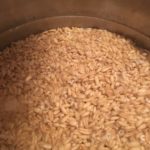Organic “Moro” Blood Oranges on sale in January 2023 for $2.59/lb
“Moro” blood oranges have a rind that is orange, kissed with red blush, and has a leathery texture, pebbled with prominent oil glands. Underneath the surface of the rind, there is a medium-thick pith that is white, spongy, and tightly adhered to the flesh. The flesh ranges in color from orange with red blush, to maroon, crimson, to a saturated, almost black hue, depending on the climate that it is grown in. The flesh is also soft, juicy, and nearly seedless, divided into 10-11 segments by thin membranes. Moro blood oranges have a slightly sweet, floral fragrance and a sweet-tart taste with notes of cherries and raspberries. The oranges with the deepest pigmentation will exhibit more intense sweet berry notes characteristic to blood oranges.
Moro blood oranges, botanically classified as Citrus sinensis, are an early season Italian variety that grows on a highly ornamental, evergreen tree that belongs to the Rutaceae or citrus family. Their color is due to a pigment called anthocyanin, not usually present in citrus but common in other red fruits and flowers. Fluctuations in temperature greatly affect the degree to which blood oranges develop their characteristic blush. Though the Moro can vary greatly in this respect, no other blood orange variety is known to exhibit such deeply red colored fruits.
Moro blood oranges are a good source of vitamin C, potassium, folate, thiamine, dietary fiber and most notably antioxidants supplied by its anthocyanin content.
Moro blood oranges are both intensely flavored and colored, adding a unique citrus flavor as well as visual appeal to a dish. They are often used raw and can be sliced and mixed into parfaits, desserts, salads, salsa, and garnished over seafood and poultry. Moro blood oranges also stand up well in cooked applications and may be paired with sweet or savory flavors. Moro blood orange juice can also be served as a stand-alone juice, used in cocktails with prosecco, cooked into syrups, sorbets, marmalades, compotes, sauces, and vinaigrettes, or used to flavor cheesecake, pound cake, or muffins. Moro blood oranges pair well with meats such as duck, poultry, pork, and seafood such as Mahi Mahi, other citrus, mint, tarragon, soft cheeses, shallots, arugula, roasted beets, fennel, shallot, Dijon mustard, Greek yogurt, honey, rolled oats, pistachios, sweetened coconut, mango, cinnamon, avocado, ginger, lime, mint, and cilantro.
They will keep up to one week when stored at room temperature and up to two weeks when stored in the refrigerator.


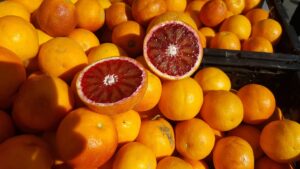
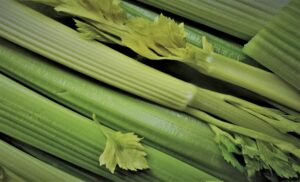
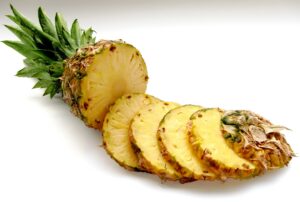
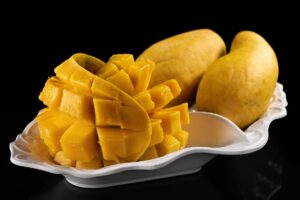
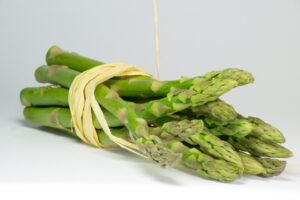
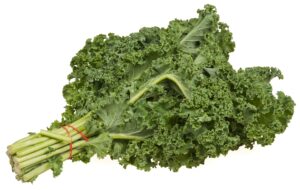

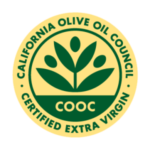 undergoes a critical analysis by an expert panel. The trained sensory panel (think of these people as the sommeliers of olive oil) ensure that the oil is free of defects in flavor or odor. In the U.S., many oils are labeled “extra-virgin” but do not undergo any such testing.
undergoes a critical analysis by an expert panel. The trained sensory panel (think of these people as the sommeliers of olive oil) ensure that the oil is free of defects in flavor or odor. In the U.S., many oils are labeled “extra-virgin” but do not undergo any such testing.
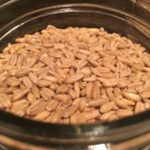 While shopping in our El Cerrito store bulk section, I was tempted to try the organic oat groats instead of the rolled oats. I was both inspired by the current sale price ($1.19/lb) and want the healthiest option for our five year old son. Our bulk buyer, David gave me another reason. He said, “why not eat things as close to the way mother-nature produced them as possible.” I can’t argue with that logic so I bought a bulk bag of groats.
While shopping in our El Cerrito store bulk section, I was tempted to try the organic oat groats instead of the rolled oats. I was both inspired by the current sale price ($1.19/lb) and want the healthiest option for our five year old son. Our bulk buyer, David gave me another reason. He said, “why not eat things as close to the way mother-nature produced them as possible.” I can’t argue with that logic so I bought a bulk bag of groats.